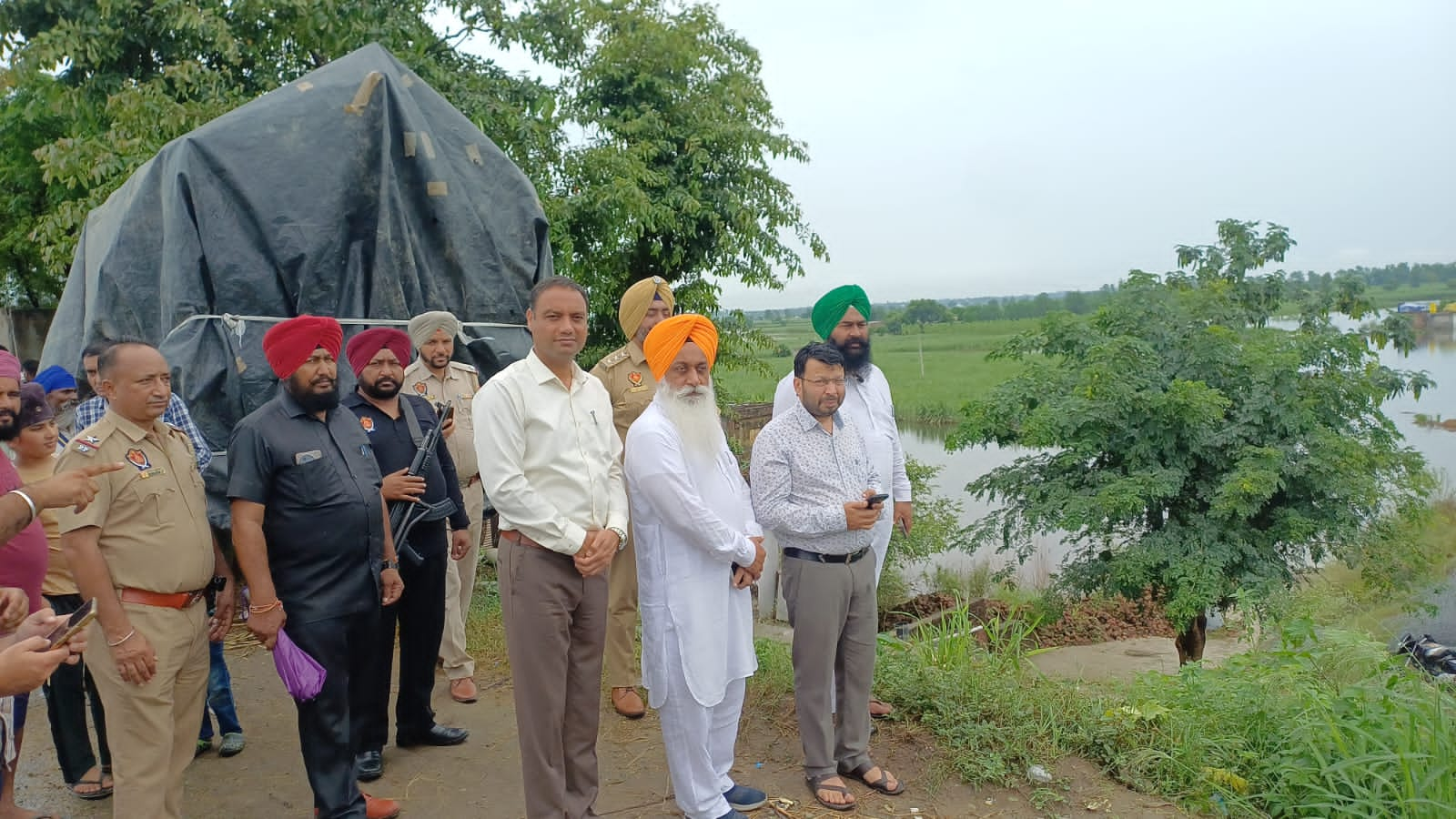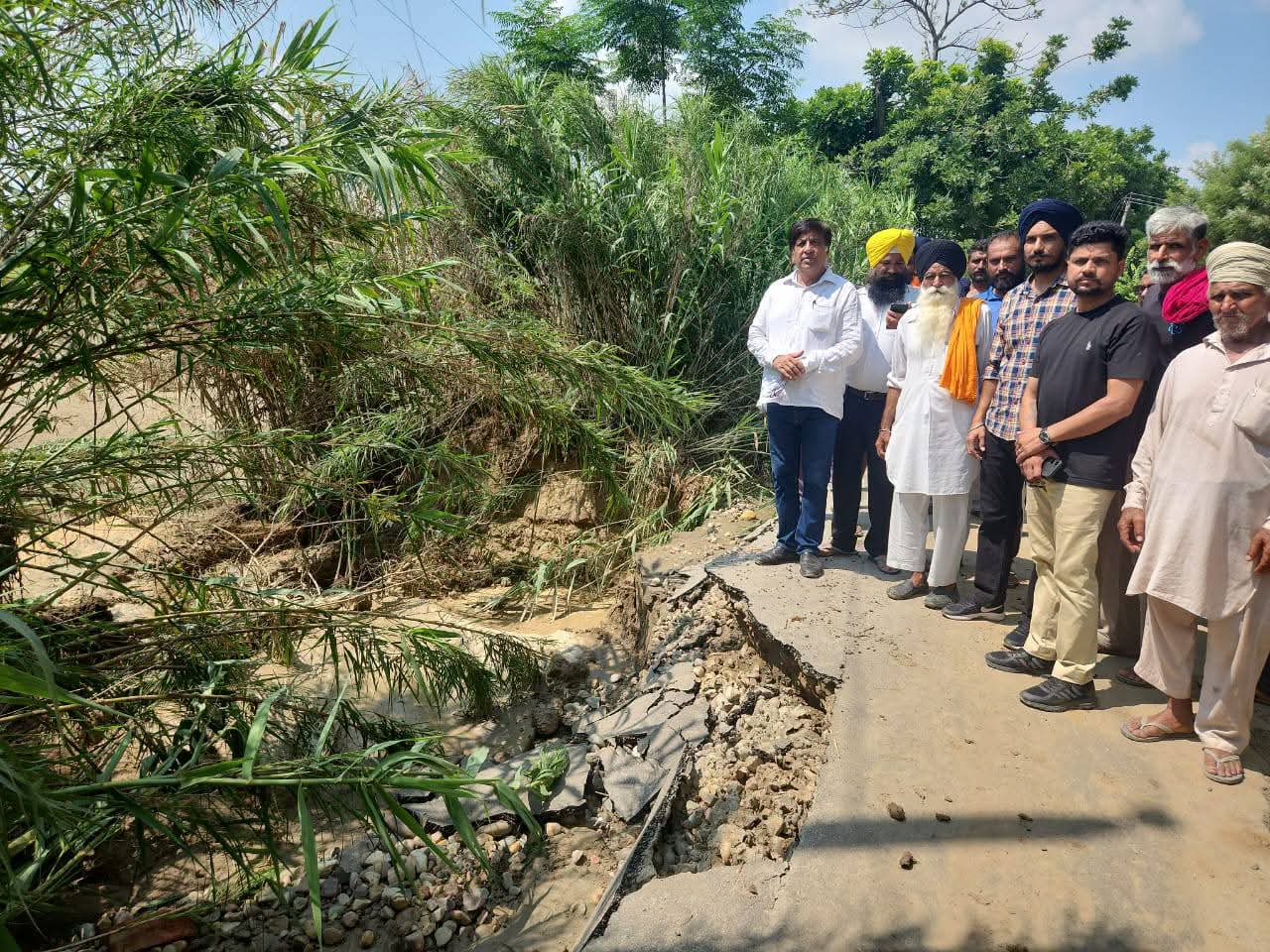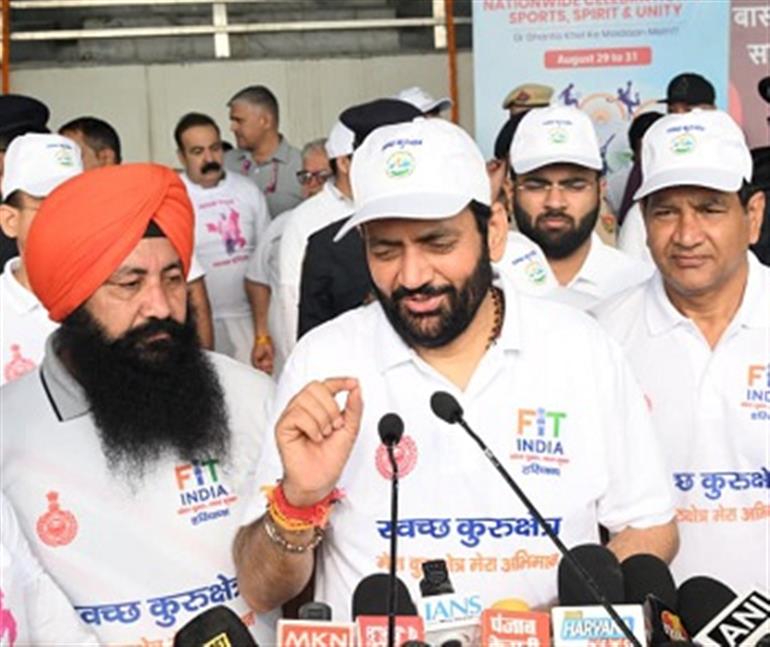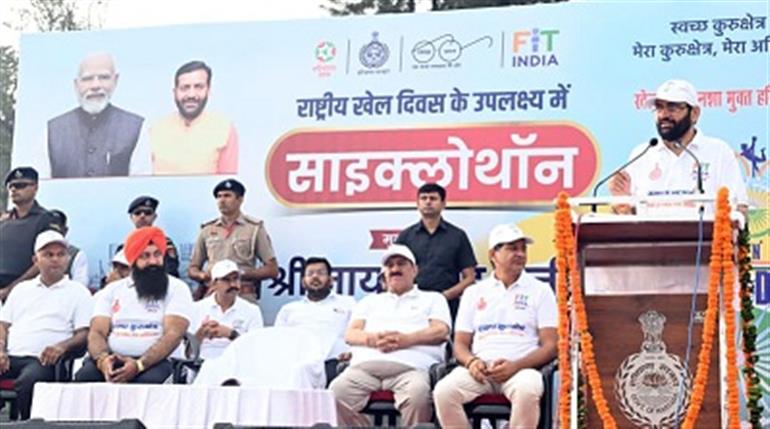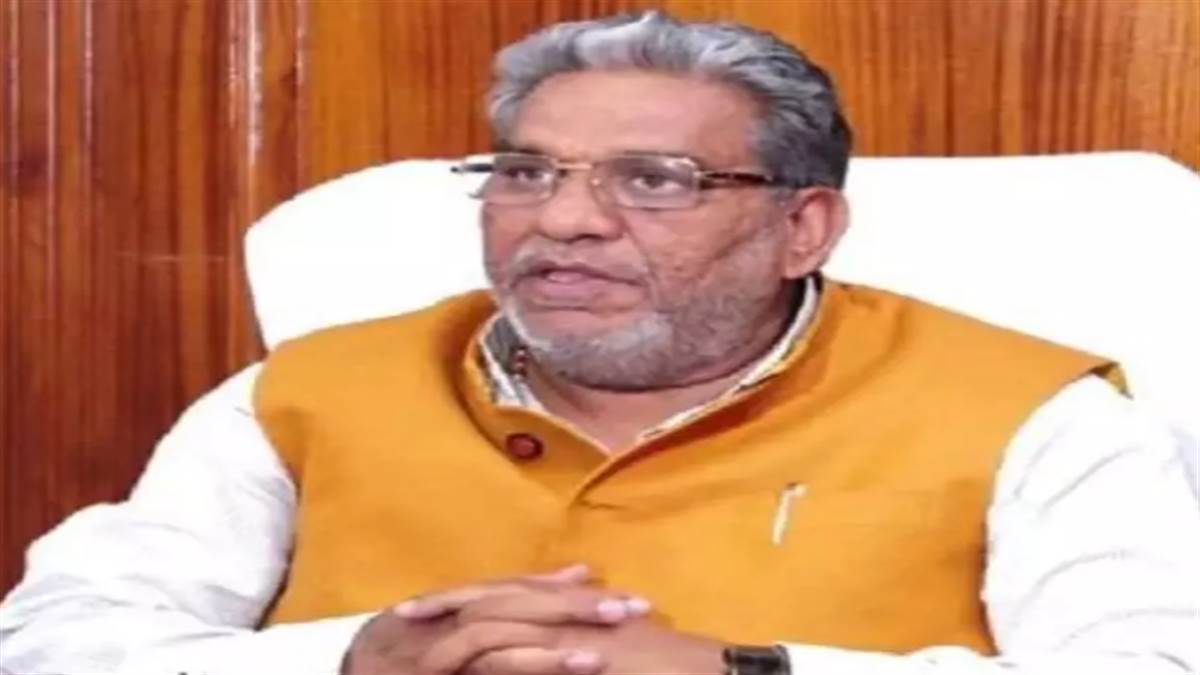
Bhoomi pujan for 1101 kundas Athirudra Mahayagma near Shri Siddheshwar Shiv Mandir completed
Hoshiarpur- With the blessings of Brahmin Swami Basantagiri Ji Maharaj, Swami Udayagiri Ji Maharaj performed Bhoomi pujan for the preparation of 1101 kundas Athirudra Mahayagma near Shri Siddheshwar Shiv Mandir, Bassi Ghulam Hussain, Hoshiarpur today.
Hoshiarpur- With the blessings of Brahmin Swami Basantagiri Ji Maharaj, Swami Udayagiri Ji Maharaj performed Bhoomi pujan for the preparation of 1101 kundas Athirudra Mahayagma near Shri Siddheshwar Shiv Mandir, Bassi Ghulam Hussain, Hoshiarpur today.
Swami Vishwanand Ji Maharaj, the spiritual head of Shri Kalinath Kaleshwar Mahadev Tirtha Kshetra, who arrived as the chief guest on this auspicious occasion, said that Athirudra Mahayagma is very unique in the world and participating in it gives immense merit.
He said that through the yagma, the havan material is offered to the gods through fire, with which they are pleased and bless them. Yagya is a spiritual path that has been going on since ancient times and is very important for the purification of the body, mind and environment.
MLA Brahm Shankar Jimpa said that considering the current situation in the world, only such yagyas conducted by the resolve of detached and accomplished yogis like Swami Udayagiri Ji Maharaj are beneficial for the welfare and peace of the world. He said that it is our duty to cooperate in the yagya with our body, mind and wealth.
Former MP Avinash Rai Khanna said that preparations and public awareness for the Maha Athirudra Yagya to be held on 19 February 2026 have begun by performing Dhajja Rohan and Bhoomi Puja on the holy day of Buddha Purnima. He said that yagya is our spiritual need through which the body, mind and environment are purified.
On this occasion, Baba Balak Nath Trust Chairman Harvinder Singh Pathania, former Sarpanch Narveer Singh Nandi, Shri Siddheshwar Shiv Mandir Trust Secretary Anurag Sood, former DGM Mandi Board Naresh Bains, and Principal Aarti Sood Mehta also appealed to the devotees to cooperate in every way in this very grand Mahayagga and make this historical Yagga a success. They said that the Athirudra Mahayagga with 1101 kundas is probably happening for the first time in the history of Hoshiarpur.
Sarpanch Sukhjinder Singh, Devendra Saini Pali, Manish Talwar, Deepika Palaha, Rajiv Palaha, and many spiritual personalities and a large number of devotees were present on this holy occasion.

